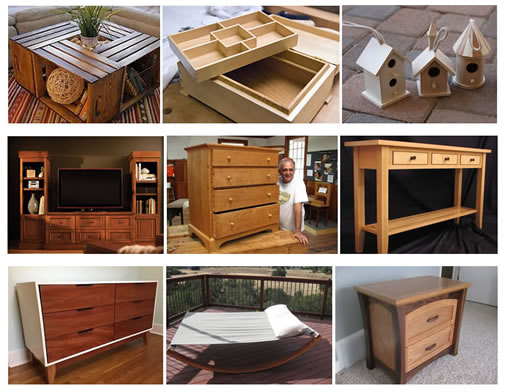Gather your marshmallows and stories because we’re building a gravel fire pit! This guide will answer the most common questions about gravel fire pits and create a charming DIY fire pit with a pea gravel seating area, perfect for roasting smores under the stars.
We will start by summarizing incorporating pea gravel in a fire pit setting.
Pea Gravel Fire Pit Area: Quick Facts
| Feature | Info |
|---|---|
| Gravel Benefits | Drains well, heat-resistant, looks good, low maintenance |
| Gravel Size | 1/4″ – 3/8″ |
| Gravel Depth | 2-3 inches |
| Area Size | It depends on the fire pit size and seating needs |
| Gravel Quantity | Calculate area x depth + 10% extra |
| Cost | $30-$55 per cubic yard |
| Base Prep | Depends on the fire pit size and seating needs |
| Key Steps | Install border, add gravel, rake smooth |
| Safety | Excavate and level the area, add landscape fabric |
I have had my fair share of barbecues and marshmallows as an outdoor enthusiast. My home fire pit has always been great for hanging out with family and friends. I have tried making my fire pits differently but found that pea gravel works best.
Check out the video below of some highlights of my family and friends having fun at our fire pit area.
Now, let’s dive into the guide to give you the desired answers.
Is pea gravel good for a fire pit area?
Yes, pea gravel is a fantastic choice for your fire pit seating area! Its small, smooth stones offer several advantages:
- Drainage Champion: Rainwater effortlessly seeps through, banishing puddles and mud.
- Heat resistance: No melting or cracking under fiery temperatures, unlike some materials.
- Aesthetics: Adds a rustic touch that blends seamlessly with your outdoor space.
- Maintenance Minimalist: Occasional raking keeps things clean and weed-free.

How to build a pea gravel fire pit area
An in-depth article explains how to build a pea gravel patio: a step-by-step guide. Below is a summary of how to do the same.
- Plan and Mark: Choose the location for your fire pit and seating area. Measure and mark the desired area with stakes and string. Ensure it’s a safe distance from any structures or flammable materials. Consider using wood best suited for outdoor furniture around your sitting area.
- Excavate and Frame: Dig out the marked area to a depth of 3-4 inches, allowing space for gravel and a border edging. Ensure the bottom is level and smooth. After the excavation, start installing the borders.
- Install the Border: Choose your preferred border material (pavers, stones, metal edging). Position and secure the border along the perimeter of the excavated area, creating a stable retaining wall for the gravel.
- Lay Landscape Fabric: Line the bottom of the excavation with landscape fabric. This prevents weeds from growing through the gravel and keeps the soil stable.
- Add Base Material (Optional): Consider adding a base layer of crushed gravel or paver sand (1-2 inches) for improved drainage and stability. This is especially helpful if your soil is soft or clay-like.
- Spread the Pea Gravel: Fill the area inside the border with pea gravel, keeping the surface level and even. Use a rake to smooth out any unevenness. Don’t exceed the recommended depth (2-3 inches) to allow for proper heat dissipation.
Remember: Always follow local fire regulations when building your fire pit and practice safe fire-starting techniques.
Pea Gravel Fire Pit FAQs
What is the Perfect Fit: Size & Quantity?
No two fire pits are created equal, so finding the right size and gravel quantity is essential. Here’s your cheat sheet:
- Gravel Math: Calculate the area of your seating zone (length x width) and multiply it by the desired depth (2-3 inches). Add a 10% buffer for good measure. This gives you the cubic feet of gravel needed.
- One-Yard Wonder: Remember, one cubic yard of pea gravel typically covers 100 square feet at a 3-inch depth.
- Fire Pit Focus: A standard 36-44 inch diameter fire pit ensures ample space for comfortable seating and safety.
- Balancing Act: Consider your outdoor space and desired seating layout to find the perfect gravel area size. Aim for a well-proportioned layout where the fire pit is the star, but the atmosphere remains cozy and inviting.
How deep should gravel be around a fire pit?
Depth Matters for the sake of safety & drainage reasons.
Aim for a depth of 2 to 3 inches. Why? It’s the sweet spot for providing an adequate depth that prevents direct contact between the fire’s heat and the underlying soil, minimizing the risk of accidental burns or damage to the landscape. It also allows rainwater to drain effectively, preventing soggy patches around your fire pit.
You may also like:
How big should a gravel fire pit area be?
A standard fire pit has a diameter of around 36 to 44 inches, providing ample space for comfortable seating and safety.
Consider the dimensions of your outdoor space and the desired layout for seating to find the right balance. A well-proportioned gravel fire pit area ensures that the fire pit becomes a focal point while allowing for a cozy and inviting atmosphere.

How much does a Pea gravel fire pit area cost?
Pea gravel prices vary, so compare quotes from local suppliers to get the best deal. Expect to pay around $30-$55 per cubic yard. Remember to factor in your fire pit area size and desired gravel depth for an accurate cost estimate.
On average, pea gravel costs between $30 to $55 per cubic yard. Consider the size of your fire pit area and the depth of gravel needed to estimate the total cost accurately.
Conclusion
Building a pea gravel fire pit area is a delightful and rewarding project that combines aesthetics with functionality. By carefully considering the materials, size, depth, and cost, you can create a warm and inviting space in your backyard, perfect for cozy gatherings and tranquil evenings under the stars.
Stay safe and follow local fire regulations when building your fire pit. Happy building!
You may also like:

John Brown
John Brown brings a wealth of experience and passion for DIY, Home and Garden, and Woodworking. With a dedication to empowering enthusiasts, he shares insights, tips, and comprehensive guides to help you transform spaces and master woodworking skills.

